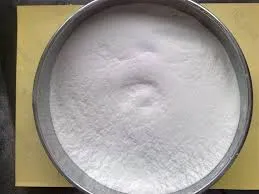
Nov . 27, 2024 23:35 Back to list
Exploring the Properties and Applications of Hydroxypropyl Methyl Cellulose in Various Industries
Understanding Hydroxypropyl Methylcellulose A Comprehensive Overview
Hydroxypropyl Methylcellulose (HPMC) is a widely utilized polymer in various industries, particularly in food, pharmaceuticals, cosmetics, and construction. This non-ionic cellulose ether is derived from natural cellulose, a key structural component of plant cell walls. HPMC is appreciated for its unique properties, including solubility in water, film-forming ability, and thickening capacity. These characteristics make it an integral ingredient in numerous formulations.
Chemical Structure and Properties
HPMC is synthesized by the etherification of cellulose with propylene oxide and methyl chloride. The resulting compound contains hydroxyl (–OH) groups that provide its solubility in water and alcohol. The degree of substitution of the methyl and hydroxypropyl groups varies, which allows for the tuning of its properties to suit specific applications. The molecular weight of HPMC can also vary, with higher molecular weight grades generally exhibiting superior thickening and film-forming properties.
One of HPMC's standout features is its ability to gel when heated, a property that is beneficial in various formulations. Upon cooling, the gel will re-thicken, retaining its viscosity. This characteristic is particularly useful in food applications where a stable texture is essential. Additionally, HPMC is stable across a wide pH range and is unaffected by electrolytes, making it versatile for different environments.
Applications in Food Industry
In the food industry, HPMC is often used as a thickening agent, emulsifier, and stabilizer. It assists in retaining moisture in baked goods, enhances the texture of sauces and dressings, and improves the mouthfeel of beverages. Moreover, its ability to form gels allows for the production of low-fat food products by mimicking the texture of fat.
The use of HPMC is particularly advantageous in the production of gluten-free foods, where it helps to replicate the binding properties of gluten, thereby improving dough elasticity and overall product quality. Its inclusion in ice creams and frozen desserts aids in creating a smooth, creamy texture while preventing the formation of ice crystals.
Role in Pharmaceuticals
The pharmaceutical industry greatly benefits from HPMC due to its biocompatibility and safety profile. It is commonly used as a binder, coating agent, and controlled-release polymer in tablet formulations. When used as a coating agent, HPMC provides a protective layer that enhances stability and prolongs the release of the active ingredient, ensuring a more effective therapeutic profile.
hydroxypropyl methyl cellulose cas

Additionally, HPMC is frequently used in ophthalmic solutions due to its lubricating properties, which help alleviate dry eye symptoms by providing moisture and protection to the ocular surface.
Functionality in Cosmetics
In the cosmetic and personal care sector, HPMC is valued for its thickening, suspending, and emulsifying properties, making it a popular ingredient in lotions, creams, shampoos, and gels. Its ability to provide a smooth texture and stable emulsions is crucial for the formulation of high-quality cosmetic products. Furthermore, HPMC is often seen in products that require a clear appearance, as it does not alter the clarity of the formulation.
Construction Applications
HPMC has also found a niche in the construction industry, particularly in dry-mix mortars, where it enhances workability and ensures that the final product adheres properly. It improves the water retention of the mix, allowing better hydration of the cement and ultimately contributing to the strengthening of the mortar.
Safety and Environmental Considerations
HPMC has a favorable safety profile, as it is generally recognized as safe (GRAS) by regulatory authorities when used in food and pharmaceutical products. Furthermore, being derived from natural cellulose, it is considered environmentally friendly. HPMC is biodegradable, and its synthesis involves no harmful solvents, making it an attractive option for manufacturers aiming to minimize their ecological footprint.
Conclusion
Hydroxypropyl Methylcellulose stands out as a multifunctional ingredient with a variety of applications across diverse industries. Its unique properties, combined with a strong safety profile, make it a valuable asset in food manufacturing, pharmaceuticals, cosmetics, and construction. As the demand for sustainable and effective ingredients continues to grow, HPMC's role is likely to expand, solidifying its position as a crucial component in modern formulations.
-
Versatile Hpmc Uses in Different Industries
NewsJun.19,2025
-
Redispersible Powder's Role in Enhancing Durability of Construction Products
NewsJun.19,2025
-
Hydroxyethyl Cellulose Applications Driving Green Industrial Processes
NewsJun.19,2025
-
Exploring Different Redispersible Polymer Powder
NewsJun.19,2025
-
Choosing the Right Mortar Bonding Agent
NewsJun.19,2025
-
Applications and Significance of China Hpmc in Modern Industries
NewsJun.19,2025







